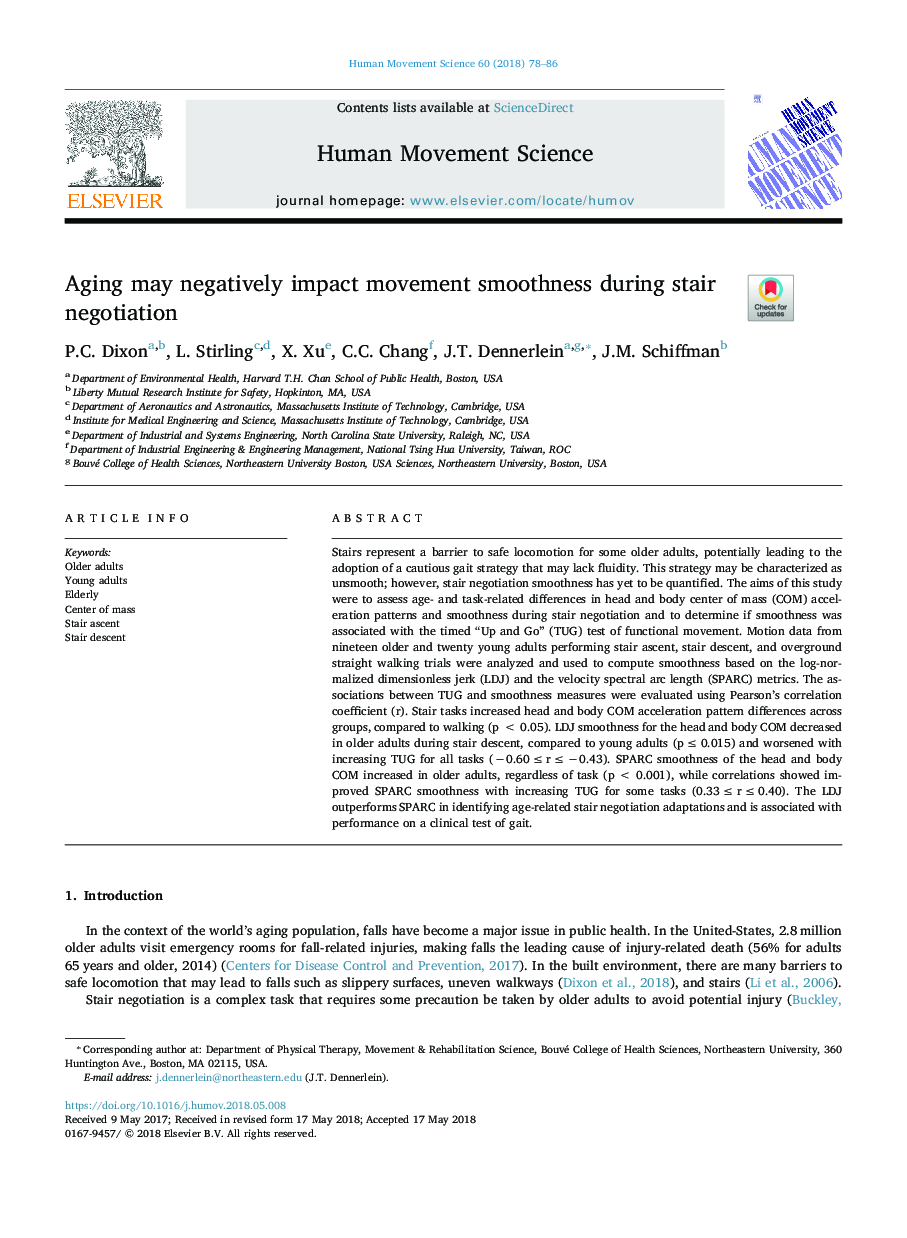| Article ID | Journal | Published Year | Pages | File Type |
|---|---|---|---|---|
| 7290799 | Human Movement Science | 2018 | 9 Pages |
Abstract
Stairs represent a barrier to safe locomotion for some older adults, potentially leading to the adoption of a cautious gait strategy that may lack fluidity. This strategy may be characterized as unsmooth; however, stair negotiation smoothness has yet to be quantified. The aims of this study were to assess age- and task-related differences in head and body center of mass (COM) acceleration patterns and smoothness during stair negotiation and to determine if smoothness was associated with the timed “Up and Go” (TUG) test of functional movement. Motion data from nineteen older and twenty young adults performing stair ascent, stair descent, and overground straight walking trials were analyzed and used to compute smoothness based on the log-normalized dimensionless jerk (LDJ) and the velocity spectral arc length (SPARC) metrics. The associations between TUG and smoothness measures were evaluated using Pearson's correlation coefficient (r). Stair tasks increased head and body COM acceleration pattern differences across groups, compared to walking (pâ¯<â¯0.05). LDJ smoothness for the head and body COM decreased in older adults during stair descent, compared to young adults (pâ¯â¤â¯0.015) and worsened with increasing TUG for all tasks (â0.60â¯â¤â¯râ¯â¤â¯â0.43). SPARC smoothness of the head and body COM increased in older adults, regardless of task (pâ¯<â¯0.001), while correlations showed improved SPARC smoothness with increasing TUG for some tasks (0.33â¯â¤â¯râ¯â¤â¯0.40). The LDJ outperforms SPARC in identifying age-related stair negotiation adaptations and is associated with performance on a clinical test of gait.
Related Topics
Life Sciences
Neuroscience
Cognitive Neuroscience
Authors
P.C. Dixon, L. Stirling, X. Xu, C.C. Chang, J.T. Dennerlein, J.M. Schiffman,
